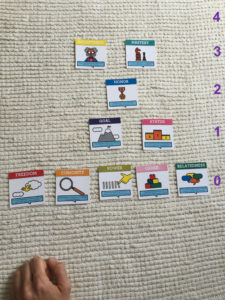by Richard Atherton
“Money makes the world go around,” so sang Liza Minnelli in Cabaret.
Or does it?
A plethora of research has now confirmed that for complex tasks, humans are simply not motivated by money. Or at least, if you do motivate them with money, they will not perform as well.
This is remarkable from two perspectives:
- It throws into question the rewards strategy of huge swathes of modern business
- According to Dan Pink, it is a rare example of the social sciences having discovered a scientific fact
When looking at the question of reward and motivation, researchers make the distinction between intrinsic motivation and extrinsic motivation.
The principal extrinsic motivator in the modern world is of course money, but extrinsic can also mean more subtle forms of ‘if-then’ rewards, like, “If you achieve this, then you I will praise you.” This could be giving someone an ‘exceeds expectations’ score in their annual performance review.
Early proof for this assertion that extrinsic motivation does not work for complex tasks was based on an exercise using two versions of Duncker’s candle problem, which measures someone’s problem-solving capabilities, by asking her to fix the candle to the wall and light it in such a way that wax won’t drip on the table.
The solution to the problem is shown below. Almost everyone presented with Scenario 1 is successful, and almost everyone presented with Scenario 2 is not.

When the economist Dan Ariely looked at how people behave under Scenario 1, with the solution obvious, extrinsic motivation wins. In Scenario 2, where the solution is not obvious, intrinsic motivation wins.

In another study in the field, Theresa Amabile looked at commissioned versus non-commissioned artists. She found that the non-commissioned, who sought their inspiration from within, were more creative, to quote: “People will be most creative when they feel motivated primarily by the interest intrinsic in the challenge of the work itself—not external pressures.”
So, if we agree that:
- most knowledge work is complex
- the best reward strategy is to appeal to people’s intrinsic motivation
We need to work out the intrinsic motivations of our teams. This is where Jurgen Appelo’s Management 3.0 Practice of Moving Motivators is a very powerful tool.
Learn how to play Moving Motivators at a Management 3.0 Foundation Workshop:


